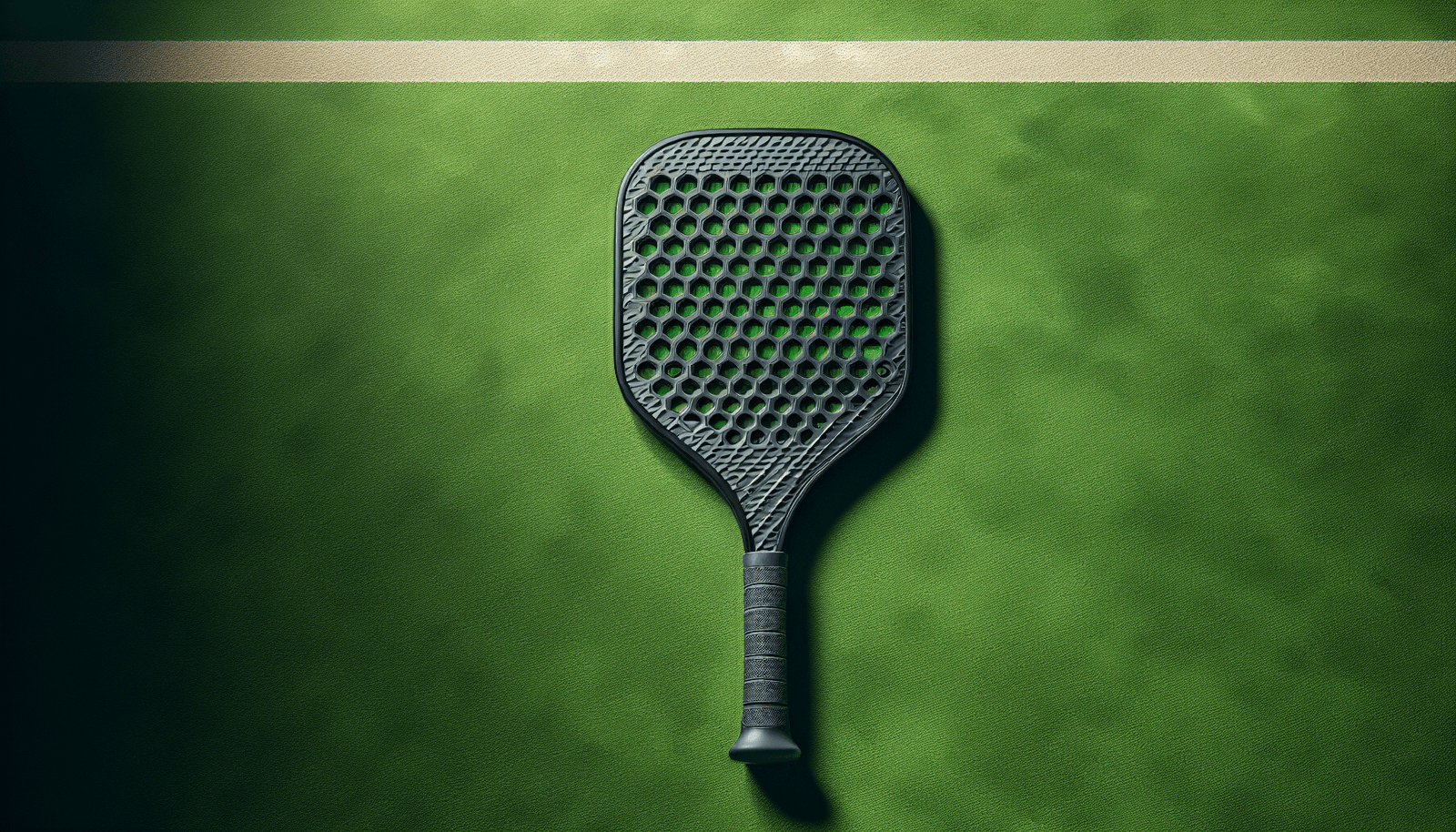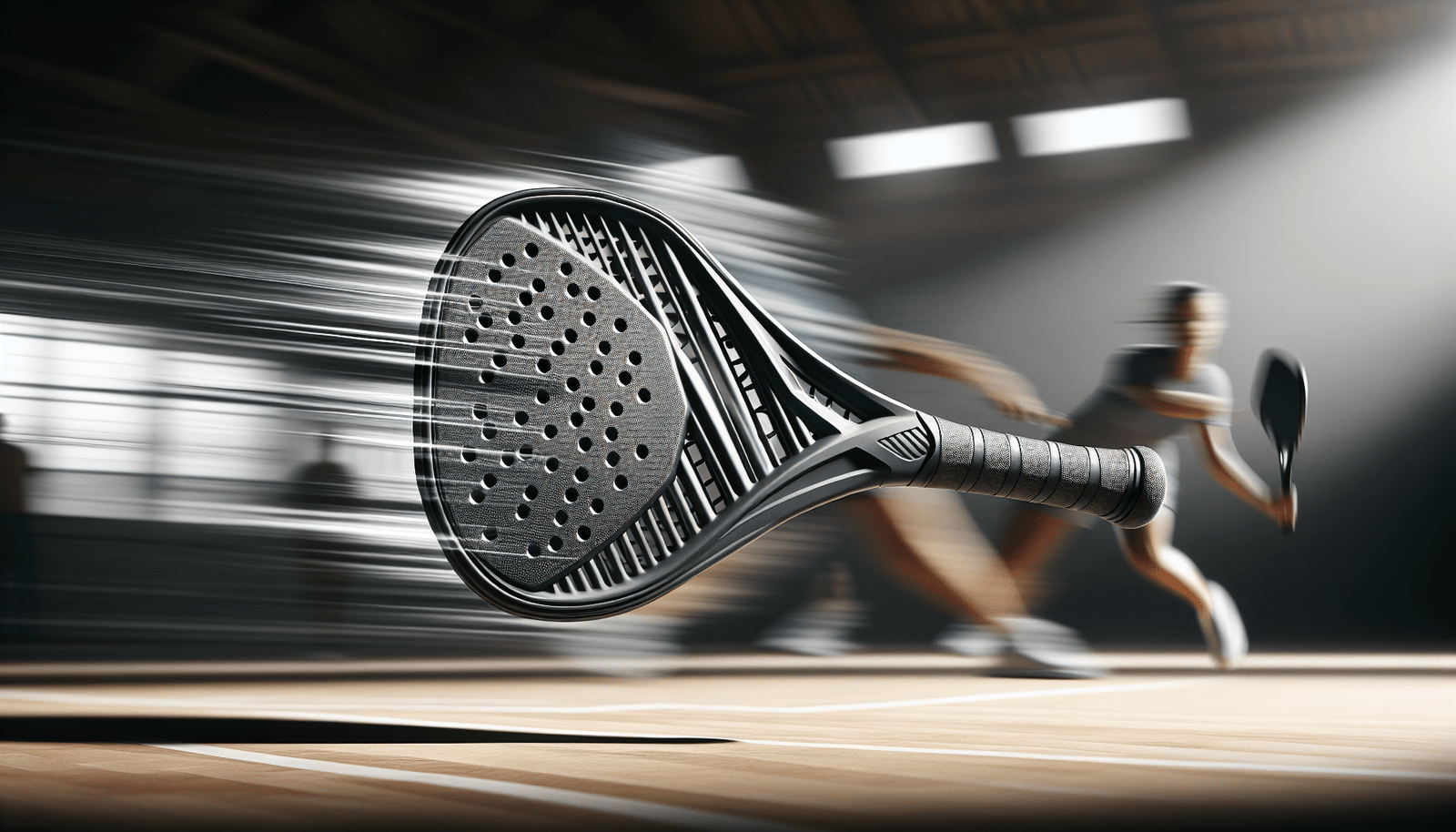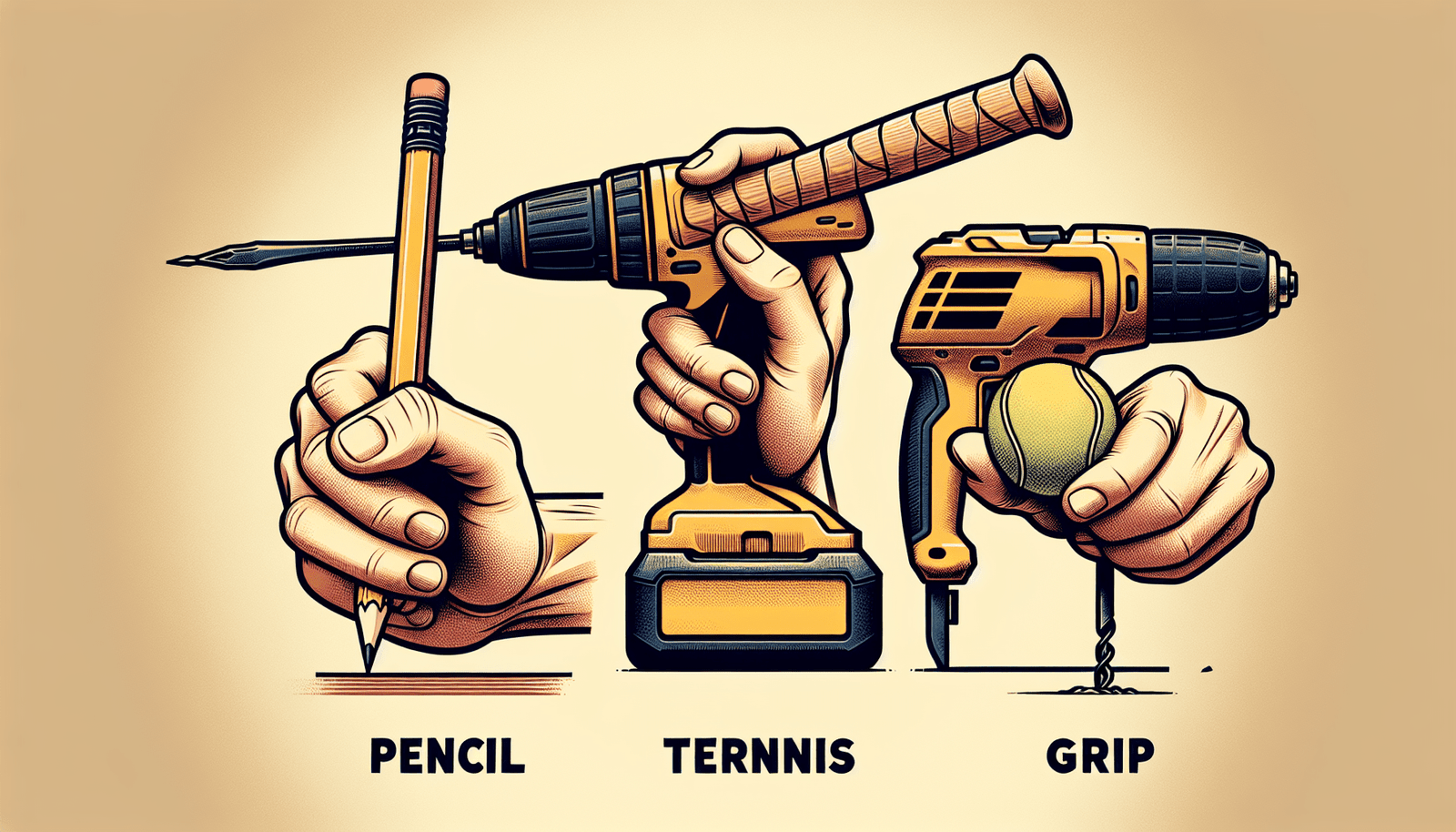So, you’ve recently discovered the thrilling and addictive game of pickleball, and now you’re eagerly looking to get your hands on the best pickleball paddle for beginners. With so many options available, it can be overwhelming to choose the right one that perfectly suits your skill level and playing style. But fear not, because in this article, we will guide you through the top contenders in the market, helping you make an informed decision that will enhance your pickleball experience. Whether you’re a complete novice or someone looking to upgrade their gear, we’ve got you covered. Let’s dive right in and explore the world of pickleball paddles!
Pickleball paddle materials
Graphite
Graphite pickleball paddles are lightweight and offer excellent control and maneuverability. They are usually made with a composite core, which provides extra power and resiliency. These paddles are popular among players who prefer a quick and responsive playing experience. Graphite paddles are often more expensive than other materials but are worth the investment for their high performance.
Composite
Composite paddles are a popular choice among pickleball players due to their versatility. They are made of a mixture of materials such as fiberglass, carbon fiber, and polymer. These paddles offer a good balance between power and control, making them suitable for players of all skill levels. Composite paddles are usually more affordable than graphite paddles and are known for their durability.
Wood
Wood paddles are the original and traditional choice for pickleball. They are typically made from hardwoods like maple or plywood. Wood paddles offer a unique feel and provide a softer touch, making them great for beginners. They are often less expensive than graphite or composite paddles but may not offer the same level of power and control. Wood paddles are also known for producing a distinctive “pop” sound when the ball is hit.
Weight and balance
Lightweight paddles
Lightweight paddles typically weigh between 6.5 to 8 ounces. These paddles are ideal for players who value speed, maneuverability, and quick reactions. They allow you to swing the paddle effortlessly and make it easier to control your shots. Lightweight paddles are a popular choice for beginners who are still developing their technique and need a paddle that is forgiving and easy to handle.
Midweight paddles
Midweight paddles generally weigh between 8 to 8.5 ounces. These paddles offer a balance between power and control, making them suitable for players of all skill levels. They provide a bit more stability compared to lightweight paddles and can help generate more power in your shots. Midweight paddles are a safe choice for beginners who are looking for a versatile option that can handle different playing styles.
Heavyweight paddles
Heavyweight paddles typically weigh over 8.5 ounces and are preferred by players who prioritize power and stability. These paddles are great for players with a stronger swing who can generate their own power. Heavyweight paddles provide more punch to your shots and can be beneficial for players who struggle with hitting the ball long distances. However, they may require more strength and can be less maneuverable compared to their lighter counterparts.
Head-heavy balance
A paddle with a head-heavy balance has more weight at the head of the paddle. This balance allows for more power and stability in your shots, but it can be slightly less maneuverable. Head-heavy paddles are often favored by players who rely on aggressive hitting and power plays.
Even balance
An even balanced paddle has an equal distribution of weight throughout the entire paddle. This balance offers a blend of power and control, making it suitable for players who want a versatile and well-rounded playing experience. Even balanced paddles allow for a good combination of maneuverability and stability, making them a popular choice among players of all skill levels.
Handle-heavy balance
A paddle with a handle-heavy balance has more weight towards the handle. This balance provides more control and maneuverability, which can be beneficial for players focused on precise and finesse shots. Handle-heavy paddles are often favored by players who rely on quick reactions and strategic placement of shots.
Grip size
Small grip
A small grip size is typically best for players with small hands or those who prefer a tighter grip on the paddle. It allows for more control and prevents the paddle from slipping during play. However, a small grip size can strain larger hands and may not provide enough comfort for extended play sessions.
Medium grip
A medium grip size is the most commonly used grip size and is suitable for players with average-sized hands. It offers a good balance between control and comfort. Most paddle manufacturers produce paddles with a medium grip size to cater to the widest range of players.
Large grip
A large grip size is recommended for players with larger hands or those who prefer a looser grip. It provides more comfort and helps reduce fatigue during longer play sessions. A large grip size can offer excellent control but may sacrifice some maneuverability compared to smaller grips.
Paddle shape
Widebody
A widebody paddle refers to a paddle with a larger face surface area. These paddles offer a larger sweet spot, making it easier to hit the ball consistently. Widebody paddles are great for beginners as they provide forgiveness and confidence when striking the ball. They offer more stability and a larger hitting surface, which can be beneficial for players who are still working on their accuracy and timing.
Standard
The standard paddle shape is the most commonly used shape in pickleball. It offers a good balance between maneuverability and a larger hitting surface. Standard-shaped paddles are suitable for players who value versatility and a blend of power and control. They are a safe choice for beginners who are unsure about their playing style and want a versatile paddle that can handle different shots.
Narrowbody
Narrowbody paddles have a smaller face surface area, which offers more control and maneuverability. These paddles are recommended for players who prioritize finesse and precise shot placement. Narrowbody paddles can be beneficial for players who rely on quick reactions and strategic play. However, they may have a smaller sweet spot, requiring more accuracy in hitting the ball consistently.
Noise level
Quiet paddles
Quiet paddles produce minimal noise when the ball makes contact with the paddle surface. They are often preferred for indoor play or in noise-sensitive environments. Quiet paddles typically have a fiberglass or polymer surface, which helps dampen the sound. These paddles are a good choice for players who want a more subtle and discreet playing experience.
Moderate noise level
Paddles with a moderate noise level produce a balanced sound when the ball is hit. They offer a satisfying “pop” sound that can enhance the playing experience. Most composite and graphite paddles fall into this category. They provide a good balance between playability and noise, making them suitable for both indoor and outdoor play.
Loud paddles
Loud paddles produce a distinct and audible “pop” sound when the ball connects with the paddle face. They are often favored by players who enjoy the traditional feel and sound of wood paddles. Wood paddles are known for their loud sound, which can add excitement and atmosphere to the game. These paddles are typically used in outdoor settings where noise is not an issue.
Edge guard
Built-in edge guard
Paddles with a built-in edge guard have a protective strip around the edge of the paddle face. This guard helps prevent damage to the paddle during accidental contact with the ground or other hard surfaces. Built-in edge guards are usually made of durable materials such as plastic or rubber. They offer added durability and can prolong the lifespan of your paddle.
Removable edge guard
Removable edge guards are separate accessories that can be attached to the paddle. They offer similar protection as built-in edge guards but can be easily replaced if they get worn out or damaged. Removable edge guards are popular among players who prefer a specific style or design for their paddle. They allow for customization and flexibility in choosing the level of protection for your paddle.
Price range
Budget-friendly options
Budget-friendly pickleball paddles typically range from $30 to $60. These paddles are often made with basic materials such as wood or affordable composite. While they may not offer the same level of performance and durability as higher-end paddles, they are a great starting point for beginners who are still discovering their playing style. Budget-friendly options are also ideal for recreational or casual players who do not play competitively.
Mid-range options
Mid-range pickleball paddles usually fall in the $60 to $100 price range. These paddles offer a good balance between performance and affordability. They are often made with higher-quality composite materials and may have additional features such as an improved grip or a larger sweet spot. Mid-range options are suitable for players who are more serious about their game and want a paddle that can handle their progressing skills.
High-end options
High-end pickleball paddles are priced above $100 and are designed for competitive and advanced players. These paddles are made with premium materials such as advanced composites or high-density polymers. They often offer superior performance, increased power, and enhanced control. High-end options also come with additional features such as vibration dampening systems or advanced paddle face technology. These paddles are a significant investment but can greatly enhance your playing experience if you are a dedicated player.
Brand and reputation
Popular pickleball paddle brands
There are several reputable pickleball paddle brands known for their quality and performance. Some popular brands include:
-
Selkirk: Selkirk offers a wide range of paddles suitable for players of all skill levels. They are known for their innovative designs, reliable craftsmanship, and great customer service.
-
Paddletek: Paddletek is a well-established brand that focuses on producing high-quality paddles with excellent control and durability. They offer a variety of paddle materials and models to cater to different player preferences.
-
Onix: Onix specializes in producing quality paddles that offer a balanced combination of power and control. They are known for their attention to detail, sleek designs, and paddle technologies that enhance the playing experience.
-
Engage: Engage is recognized for their advanced paddle technologies and high-performance paddles. They offer a range of paddle materials and models designed to maximize power, spin, and control.
Customer reviews and recommendations
When considering a pickleball paddle, it can be helpful to read customer reviews and recommendations. Hearing from other players who have used the paddles can provide valuable insights and help you make an informed decision. Look for reviews that mention factors such as durability, comfort, playability, and overall satisfaction. Keep in mind that individual preferences and playing styles can vary, so it’s essential to consider a diverse range of opinions before making a decision.
Beginner-friendly features
Lightweight and maneuverable
For beginners, a lightweight and maneuverable paddle can greatly assist in developing proper strokes and improving control. These characteristics allow for quicker reactions and easier handling of the paddle. Look for paddles that fall within the lightweight category to ensure a comfortable and manageable playing experience.
Generous sweet spot
A paddle with a generous sweet spot is ideal for beginners. The sweet spot refers to the area on the paddle face that provides the most power and control when striking the ball. A larger sweet spot offers forgiveness, allowing you to hit the ball more consistently even if your shots aren’t perfectly centered. This provides confidence and helps in the learning process.
Forgiving paddle face
A forgiving paddle face refers to a surface that absorbs the impact and reduces vibrations when striking the ball. This feature is especially helpful for beginners who may not have perfected their technique yet. A forgiving paddle face helps minimize mishits and provides better control, allowing beginners to focus on improving their skills without the fear of excessive error.
Stable and controlled
Beginners can benefit from a paddle that offers stability and control. This allows for better shot placement and accuracy, which are essential skills to develop in pickleball. Look for paddles that have a balanced weight distribution and a solid construction to provide stability during shots. A paddle with good control allows for consistent play and helps beginners progress their game.
Considerations for specific playing styles
Power hitters
If you are a power hitter, you may want to consider a paddle that offers extra power and stability. Look for paddles with heavier weights and a head-heavy balance to generate more power in your shots. Composite or graphite paddles with a larger hitting surface can also help maximize your power potential. Additionally, paddles with a sturdy construction and advanced technologies designed to enhance power transmission would be beneficial for power hitters.
Control players
Control players prioritize precision and shot placement. For this playing style, consider paddles with an even balance and a medium grip size. These paddles provide a good balance between power and control. Look for paddles with a smaller face surface area to enhance maneuverability and improve shot accuracy. Paddles with a forgiving paddle face and a stable construction can also assist control players in placing their shots precisely.
Spin enthusiasts
If you enjoy incorporating spin shots into your game, look for paddles with a textured or rough surface. This texture helps create more friction between the paddle and the ball, allowing for better spin control. Composite or graphite paddles with a rough surface are commonly preferred by spin enthusiasts. Additionally, paddles with a medium grip size and an even balance can provide the maneuverability and control needed for executing spin shots effectively.
All-around players
If you have an all-around playing style, you may want a paddle that offers a blend of power, control, and maneuverability. Consider paddles with a midweight and an even balance. These paddles provide versatility and can handle different shot styles. Look for paddles with a medium grip size to ensure comfort and control. Additionally, paddles with a larger sweet spot and a forgiving paddle face can assist in all-around play by providing stability and enhancing shot consistency.
In conclusion, selecting the best pickleball paddle for beginners involves considering various factors such as paddle materials, weight and balance, grip size, paddle shape, noise level, edge guard options, price range, brand reputation, and features that cater to specific playing styles. By understanding these considerations and analyzing your own preferences and playing style, you can make an informed decision and find a paddle that suits your needs. Remember to also consider customer reviews and recommendations to gain insights from other players’ experiences. Whether you prioritize power, control, spin, or versatility, there is a pickleball paddle out there that can help you enjoy the game to the fullest and improve your skills as a beginner.




